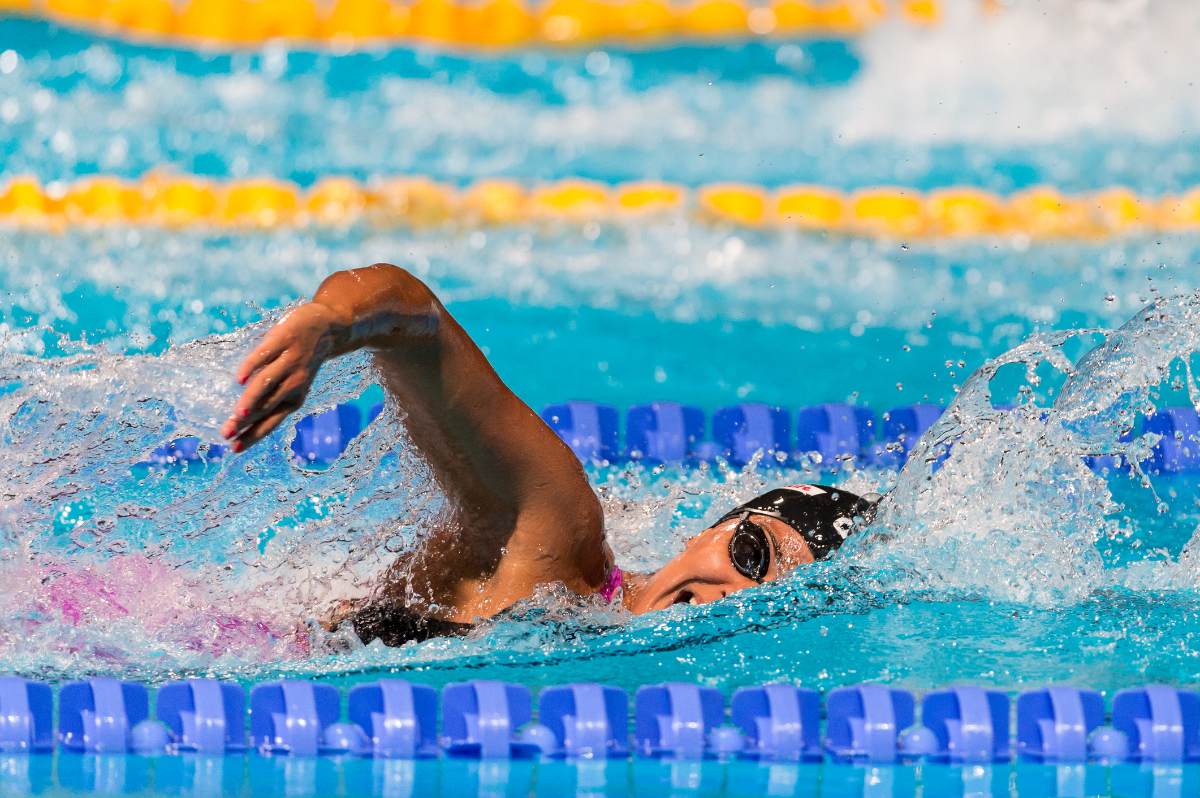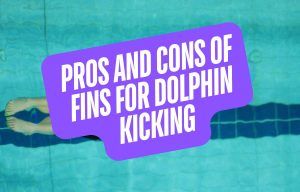Looking to improve your speed and efficiency in the water? Start with proper body position. Here are some ways to improve body position and why it’s so crucial for faster swimming.
Improving in the water requires a lot of different things, from mastering the hand entry position to training the right energy systems.
And while we can debate how much time should be spent on different types of training, there is one thing we can all agree on is essential for swimmers, regardless of ability level…
And that is having a proper body position in the water.
After all, body position allows us to exert maximum power in our pull and kicking motions, reduces drag, cuts down the risk of injury, and most importantly of all, increases how fast we move through the water.
In this guide, we will take a chlorinated look at what having proper body position means, the benefits of swimming with awesome body positioning, and detail some proven ways to improve your body position at the pool.
Let’s dive right in!
Body Position for Swimming – What Is It?
Body position in swimming refers to the posture and body line of the swimmer when moving through the water. Optimal body position helps swimmers move more efficiently, reduce injuries, and increase overall swimming speed.
Good body position in swimming includes several key components:
High hips – High hips keep your legs from creating extra drag and give you the sensation of floating along the water’s surface.
Neutral head position – The head is straight with the spine, in a neutral position. No scrunching or looking “forward” with your eyes.
Streamlined – An awesome body position can be most easily visualized as a streamlined body position. From the head to the hips to the feet, the swimmer creates a thin, streamlined profile in the water.
Narrow kicking motion – In this article, we will focus primarily on positioning the head, trunk, and hips, but excellent body positioning also includes a narrow and powerful kick (as opposed to a large, water-cutting scissor kick).
Ultimately, an efficient body position places you in a position to make the most of your strength and energy systems without wasting any extra effort or encountering needless resistance.
Next, we will look at some of the cool things that happen when we spend more time working on body position in the water.
(Spoiler: You swim faster.)
Why is Body Position So Important?
Body position is crucial for swimmers for a variety of reasons, including:
Proper body position reduces drag.
The most immediate benefit of proper body position in the water is creating less drag. Drag is the resistance or force that opposes a swimmer’s forward motion. The less drag you create, the faster you can go with less effort.
While expensive tech suits and shave-downs get a lot of attention, to significantly reduce drag, it’s critical to cut down on the amount of resistance at the front of the body, where most of the form and turbulence drag occurs.
Think about it—not only are your hands and arms entering the water at the front of the body, but you are providing a wide and thick object of resistance in the form of your shoulders and head.
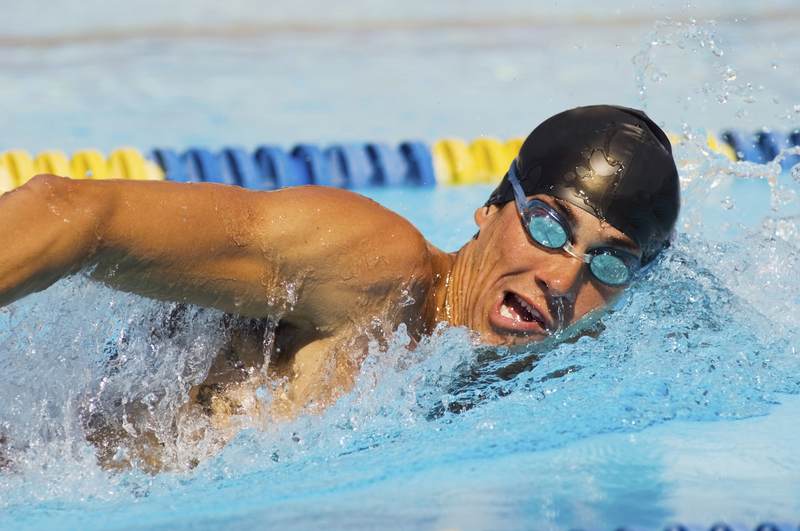
Improper body position enlarges the amount of frontal drag you are creating, effectively pulling a parking brake on your swimming.
Proper body position cuts down on the amount of friction and force between the swimmer and the water, allowing you to swim much faster with much less effort.
Increased speed.
Optimal body position reduces drag, which leads to more speed.
This seems obvious, but for many swimmers, this “obvious” concept goes out the window the moment they dive into the water. They revert to over-rotating when breathing, leading with the forehead, crossing over with the hand entry, presenting a ton of frontal drag, and more.
The simple reality is that good body positioning in the water results in a more streamlined swimmer, and a streamlined swimmer will be faster than a non-streamlined swimmer.
A study published in the Journal of Applied Biomechanics took video footage from a group of male 100-meter freestylers from the 1992 Barcelona Olympics and digitized the footage to recreate the stroke cycle of each swimmer.
The study found that the swimmers with a more streamlined body position swam faster. But the real kicker is that when it came to pulling velocity between the elites and non-elites, there was no statistical difference.
The swimmers were all pulling with the same force, but the faster swimmers got an edge by creating less front surface drag and maintaining a more streamlined body position.
By keeping a streamlined body position in the water, you swim faster without exerting more strength or force than the swimmer in the next lane.
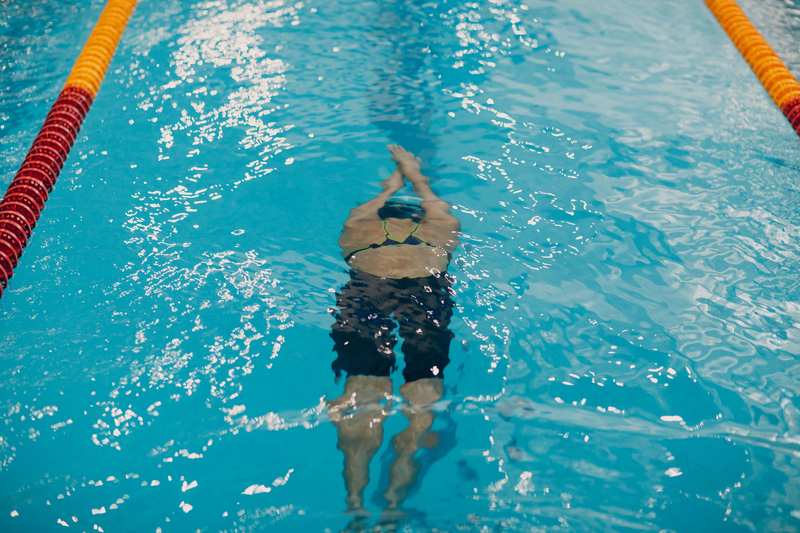
Reduces technique errors.
One of the leading freestyle technique errors is an “eyes forward” head position.
Picture a swimmer snowplowing the water with their forehead.
This position sinks the hips, increasing drag, and also increases the risk of impingement.
Efficient body position reduces technique errors when swimming.
Increases stroke length.
Good body position in the water means the head and spine are neutral, which allows you to complete overhead movements more effectively.
And because the shoulders aren’t crunched up, the shoulders are “loose” and can rotate effectively and with more distance.
Reduces injury.
And lastly, good body position helps reduce the risk of injury in the water.
A neutral head position means your neck and traps aren’t being mashed together, increasing the risk of impingement and the dreaded swimmer’s shoulder.
How Swimmers Can Improve Body Position
Maintaining optimal body position in the water takes focus and attention to detail in the water.
Based on my years of competitive swimming experience and coaching, here are some of the most effective ways swimmers can get better at positioning themselves for maximum speed in the water:
Focus on a straight “Head Spine Line.”
Good body position in the water was emphasized to me as a burgeoning age group swimmer with this simple instruction: keep a straight “head spine line” when swimming.
This means that your body is straight and in a neutral position from your head to the bottom of your spine.
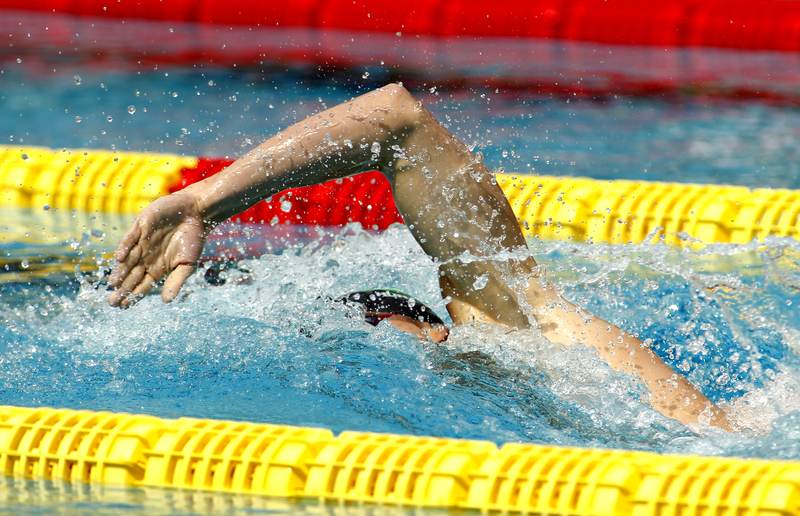
This body positioning not only helps keep your hips high, but if you focus on keeping your line straight, and don’t break it to turn to breathe, you can avoid over-rotation in the head that is common when swimmers turn to gulp down a breath.
Note: Lifting your head to breathe will throw your body position out of line. Focus on breathing with one goggle emerging from the water. The bow wave next to your head will ensure that there is clearance for your mouth to suck in air.
Use the cue “swim downhill.”
Another cue for excellent body position in the water is thinking about yourself “swimming downhill.”
Swimmers naturally gravitate towards an “uphill” posture in the water—raising the head to look forward—because of the natural safety mechanism of wanting to be able to see where you are going.
To combat this, remind yourself to swim downhill, as this will encourage a head-down and higher body position in the water.
Picking your head up when swimming can have significant drag effects.
One study published in the Journal of Human Kinetics showed a serious increase in drag depending on the positioning of the head when swimmers were in a streamline or arms-at-the-side position.
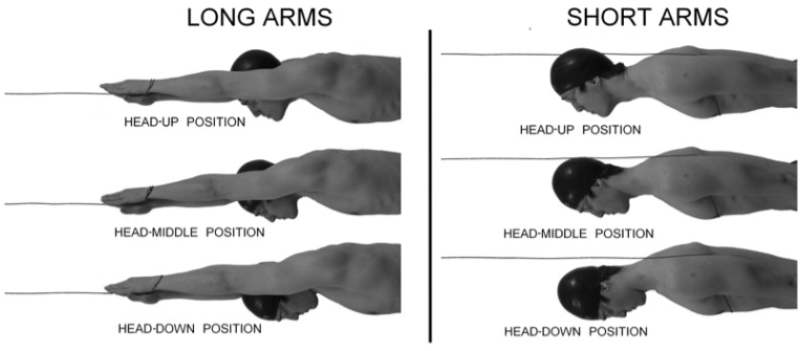
When swimmers had their heads up, with eyes facing in front at a 45-degree angle, there was an increase of drag by 10% compared to when swimmers faced the bottom of the bottom of the pool.
Imaging yourself swimming downhill naturally places you in this face-down head position, which will have the double-whammy effect of helping you swim faster and optimize your body position.
Use light resistance swim aids.
I’m a huge fan of resistance tools in the water, whether DragSox, resistance tubing, or one of my three differently-sized swim parachutes.
When it comes to improving body position, adding a little bit of resistance to the lower body forces the body to overcompensate and position itself to swim “downhill.”
During my swim workout today, I put this to the test, using a set of the lightest resistance DragSox for a series of 25s freestyle at around 70% effort.
Almost immediately, my body counterbalanced the weight on the backend by sinking the face and raising the hips.
Try doing several reps with light resistance to get a sense of proper body position and then pair it with regular swimming to make the more efficient body positioning stick.
For example, after warming up, try the following set:
Four rounds:
- 4×25 freestyle swim with light parachute at 75% effort (:30 rest between reps)
- 4×25 freestyle swim at 85% effort (:30 rest between reps)
The key is repetition and taking enough rest to maintain peak technical efficiency, so start with low distances and build up as the improved body position becomes second nature.
Incorporate a swimmer’s snorkel into your workouts.
Proper body position can be difficult to master when we are over-rotating our head to breathe or we cannot get comfortable with facing the bottom of the pool.
The swimmer’s snorkel is the perfect tool for this swimmer.
The list of benefits of swim snorkels is lengthy. Key reasons to train with one include as a tool for kickboard-less kicking, correcting excess hip roll (Barden & Barber, 2022), and yes, helping you swim with proper body position.
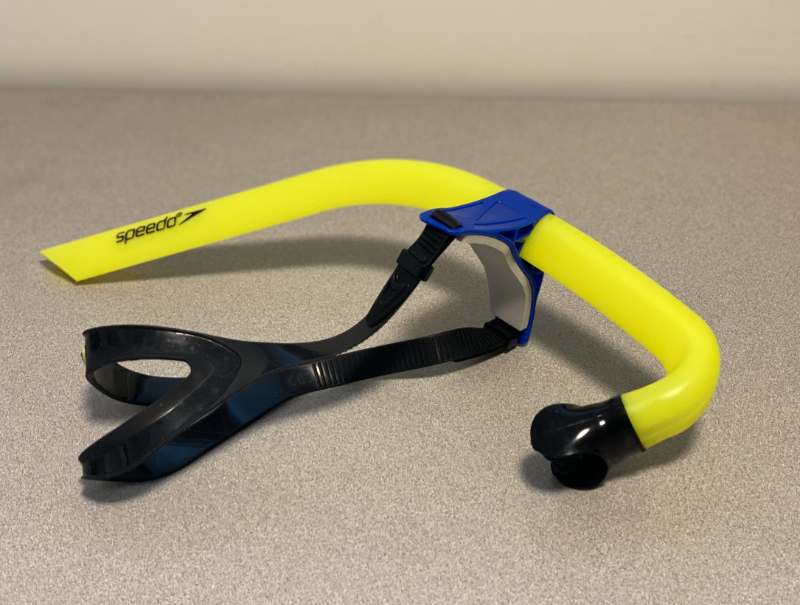
With a swim snorkel, you don’t need to turn your head to breathe, freeing you up to hyper-focus on a straight head position.
Pair swimming with a snorkel with snorkel-less swimming to help build the habit of straighter head positioning and better overall body position when swimming.
For example:
- 24×50 freestyle swim [4 with a snorkel, 4 without] @:20 rest between 50s and descend each set of four 50’s #1-4 in terms of effort and speed.
Swim fast more often.
Swimming fast is not only a lot of fun—who doesn’t like turning on the after-burners, after all—but it’s also an immediate feedback tool for what’s working in the pool and what is not.
Each day at the pool, you should make a point to do some fast efforts, at all-out or nearly all-out speed, to get a sense of how your body is moving through the water.
This is key: You can only truly learn how to swim fast by actually swimming fast.
Yes, the building blocks of technique, aerobic capacity, and strength are important, but your body can only truly learn how to move through the water efficiently when it experiences those speeds.
Swimming fast relies a great deal on feel and specificity in skill development.
Load up on some snorkel swimming, use your favorite freestyle drills, light resistance swimming at medium effort, but don’t forget to unleash (and learn) better body position at speed.
At the end of the day, all of the theorizing and skills and low-intensity drill work is great, but you can only become faster by going fast.
Try these cues, drills, and tools the next time you head down to the pool, straighten out your body position in the water, and swim more efficiently and swiftly than ever!
More Swimming Technique Resources:
7 Tips for Improving Your Freestyle Stroke. Unlock a faster and more efficient freestyle stroke with this list of seven proven tips for killer freestyle technique.
Super Slow Swimming: How to Improve Your Technique and Feel for the Water. Swimming slowly and deliberately can make you a faster, more efficient swimmer.

